The vivo X90, which launched in China last November, began its international rollout this year with the vivo X90 Pro. We’ve already reviewed the X90 Pro and found it to be an exemplary flagship smartphone with impressive imaging capabilities, but now we have the chance to spend some time with the cheaper vivo X90. We’ve been using the vivo X90 for a month and here’s what we found out about it.
Packaging
The vivo X90 comes in a blue colored retail box similar to the box of the X90 Pro with the same contents. You get a protective case, a SIM card eject tool, a USB-C cable, a 120W charger, and the usual paperwork. The package does not include the USB-C wired earphones or a 3.5mm headphone jack adapter.
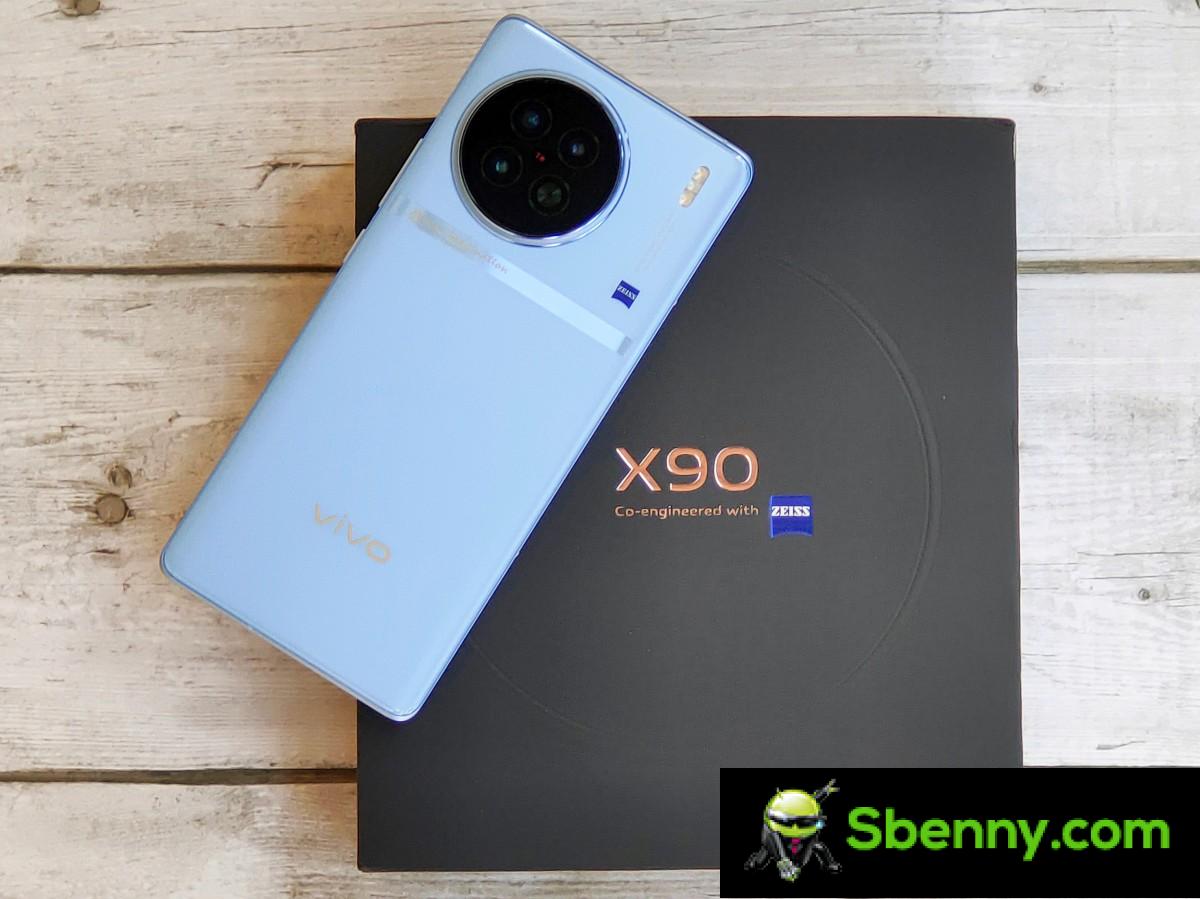
Project
The vivo X90 is built around a 6.78-inch FullHD+ curved AMOLED display, protected by SCHOTT Xensation α glass. The panel has a screen refresh rate of 120Hz and a peak brightness of 1,300 nits. It also has a hole in the center for the 32MP selfie camera.
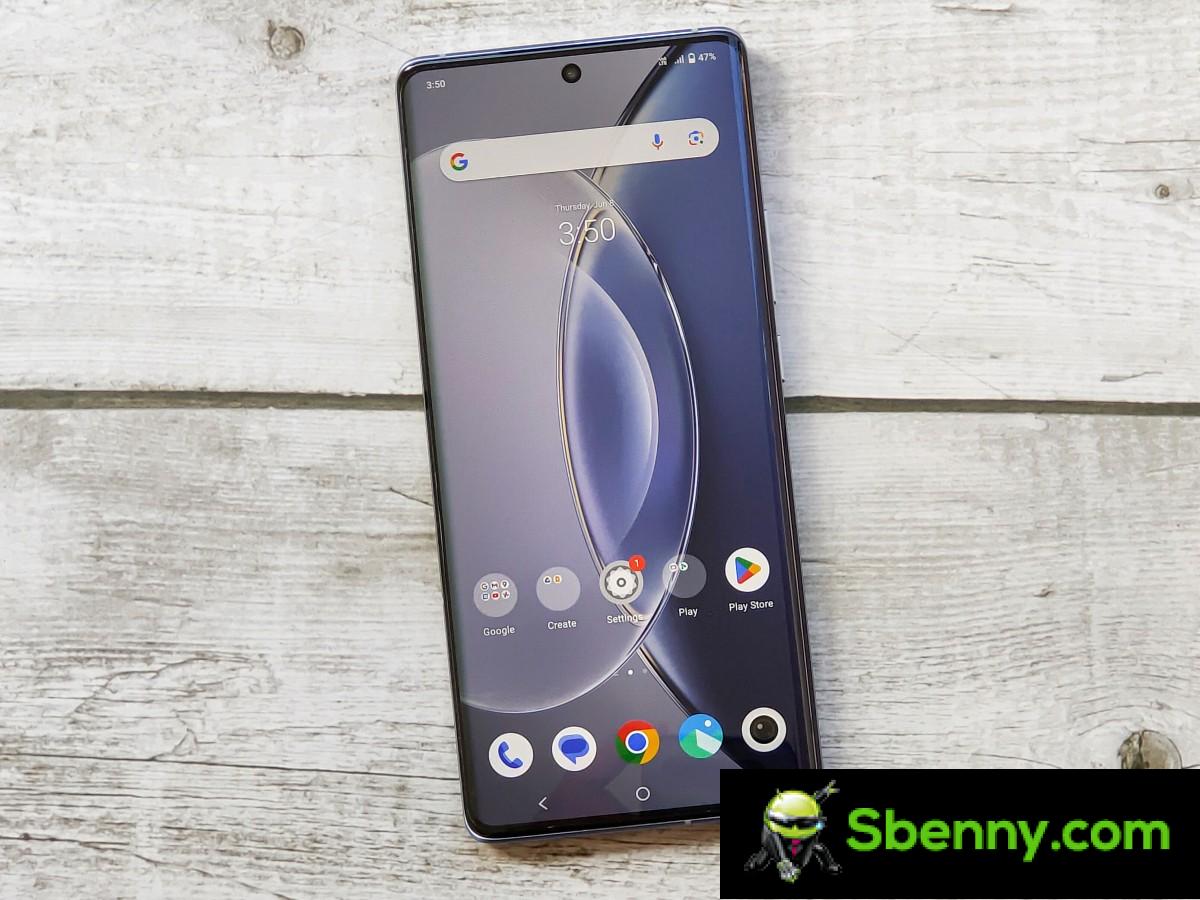
Additionally, there is an under-screen fingerprint scanner for biometric authentication. We found it fast and accurate in our usage and we really like it, but we don’t like its positioning. The UD fingerprint reader is close to the bottom bezel, making it difficult to reach. This is also the case on the vivo X90 Pro. Placing the fingerprint reader a little higher up, like on the vivo X80 Pro, would have been more comfortable and offered a better unlocking experience.
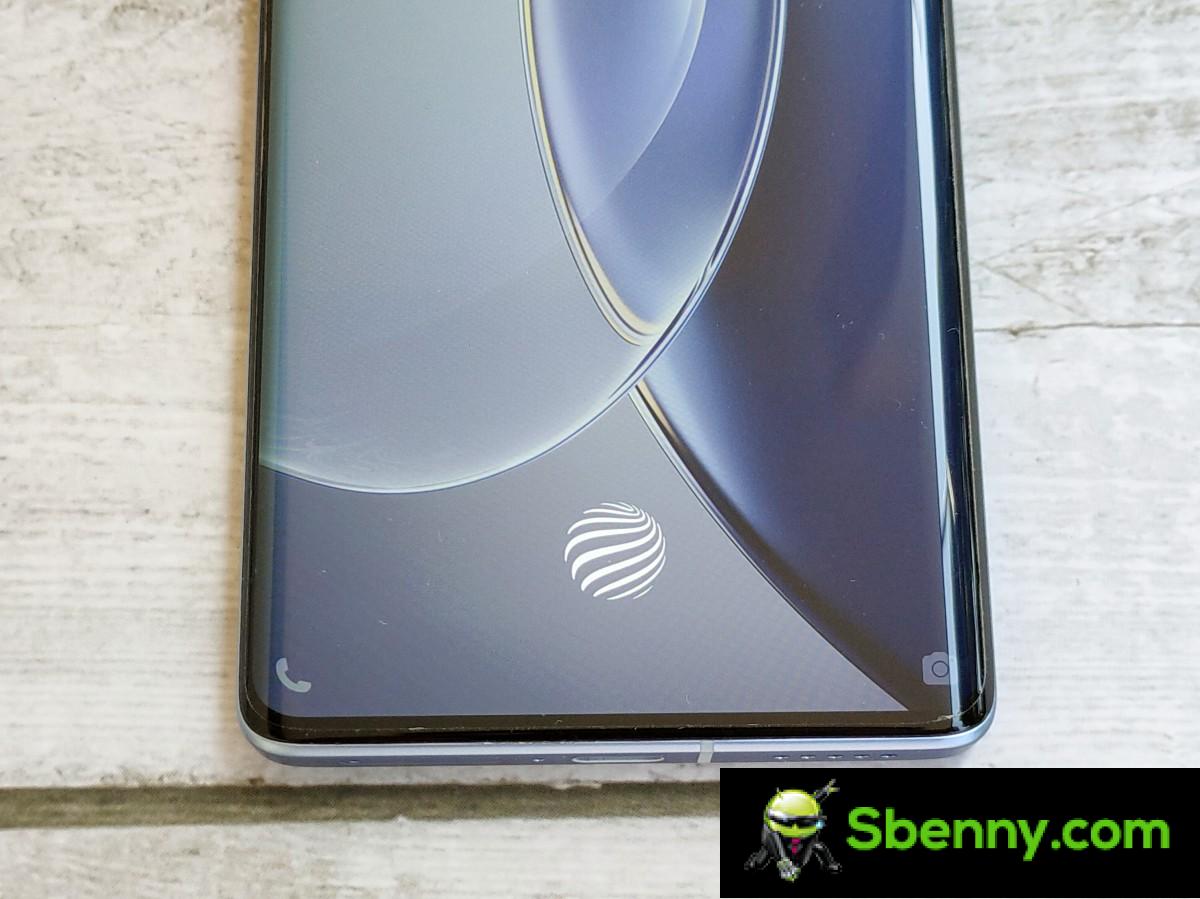
Flip the vivo X90 and you get an AG Fluorite glass panel with what vivo calls a “Big Eye” camera module that houses three cameras (the fourth circle is for the laser focus sensor). On the right side is the LED flash, along with some camera specs and ZEISS branding, and underneath is a stripe that says Xtreme Imagination, just like the X90 Pro. However, this is plastic instead of metal and it doesn’t feel premium.
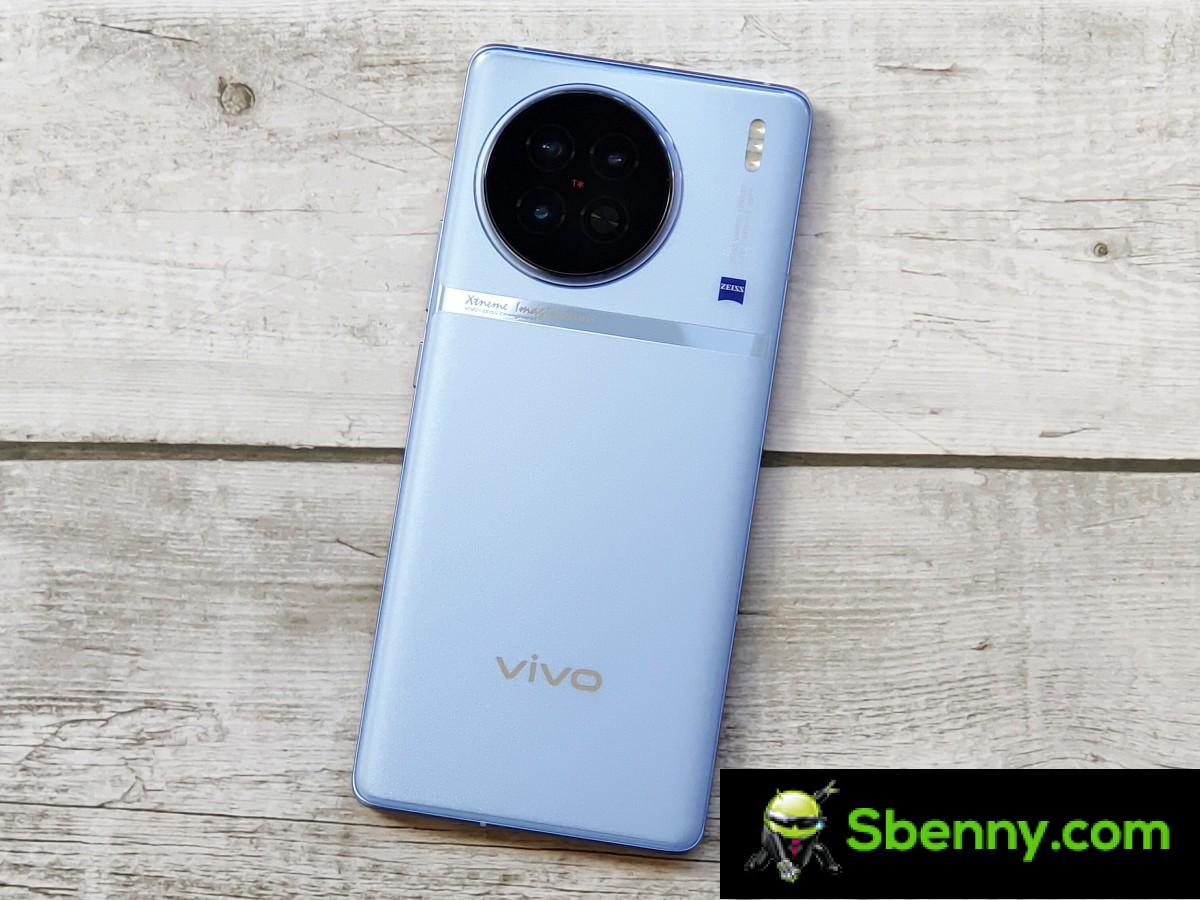
It is worth mentioning that vivo has used a “stronger and more durable glass lens with higher light transmission” for the camera module, which is made with Corning’s Gorilla Glass 6, while the cameras feature ZEISS’s T* coating.
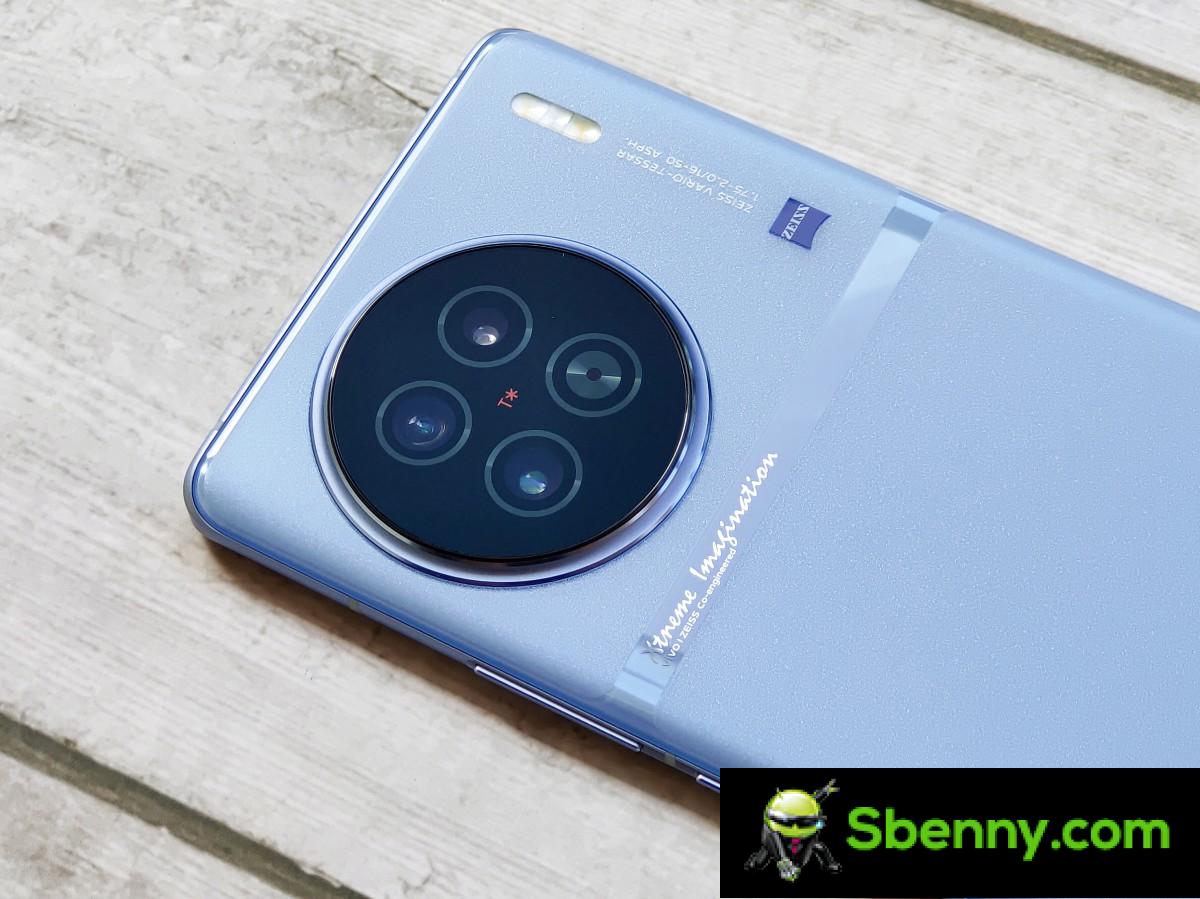
The vivo X90 is offered in Asteroid Black, Breeze Blue and Red colors with availability varying by market. We received the blue model, which looks beautiful. Its curved edge back cover has a subtle glitter pattern and a matte finish, which prevents smudges but makes the phone slippery, similar to the vivo X80 Pro. Regardless, this version feels nice to hold, even if it rocks on flat surfaces due to the protruding rear cameras, with the supplied protective case not doing much to fix it.
The X90 doesn’t have flat bezels like some lower-end vivo smartphones, which may or may not be a good thing depending on your preference.
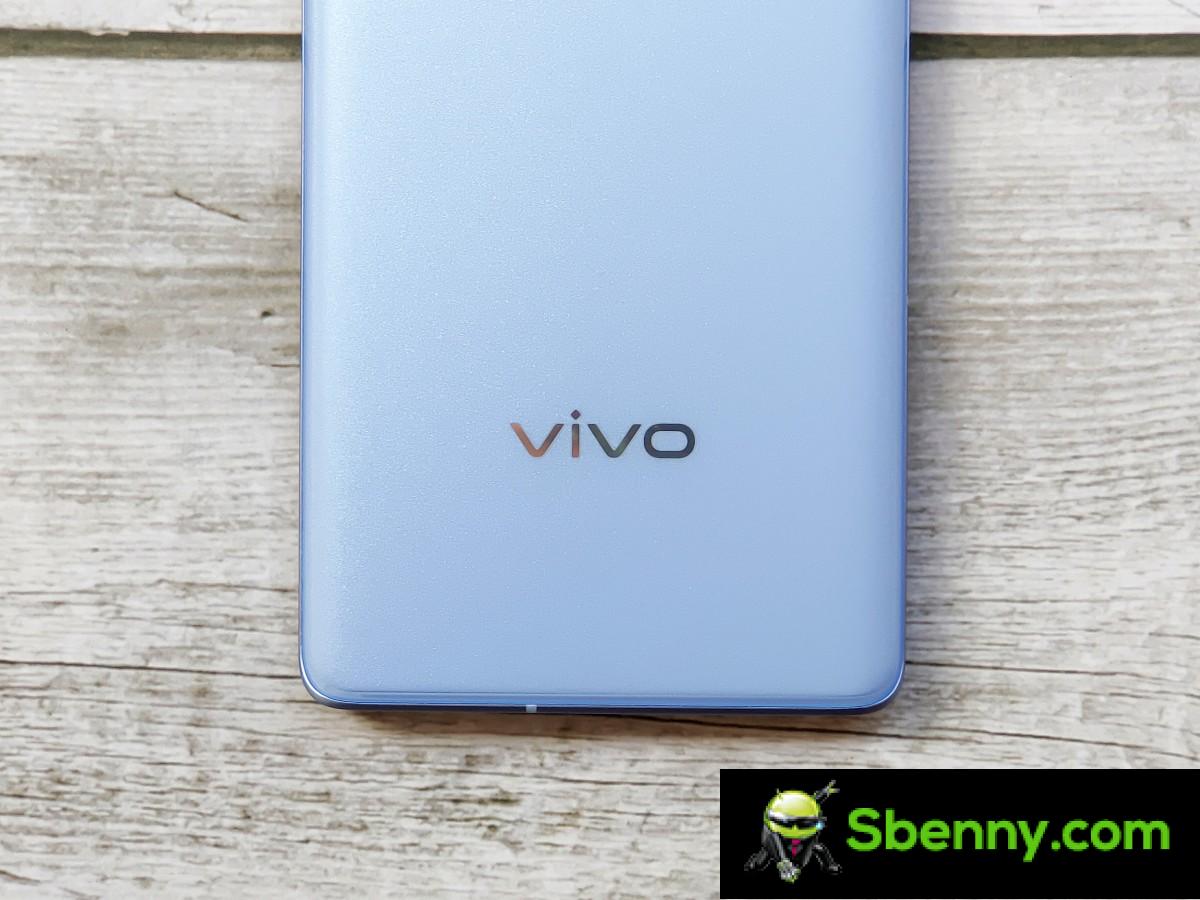
The frames themselves are made from an aluminum alloy and have antenna lines on all four sides. On the right bezel of the phone are the volume rocker and power button with good feedback, and at the bottom is the USB-C port, flanked by the SIM card slot, main microphone and a grille of the phone. speaker.
Up top is the secondary microphone, joined by an IR blaster. You also get “Pro Photography” text at the top, like the Pro variant, and a secondary speaker above the selfie camera near the frame for an immersive audio experience.

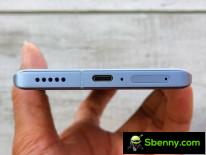
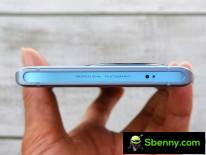
Ports and controls
We like the overall design of the vivo X90. It may not feel as premium as the X90 Pro, but it certainly doesn’t feel cheap when you hold it in your hand.
Screen
The vivo X90’s 6.78″ curved AMOLED display has a peak brightness of 1,300 nits, a refresh rate of 120Hz, and a pixel density of 452 ppi. It supports 1.07 billion colors and comes with certifications HDR10+, HDR10 and HLG It is also Widevine L1 certified, allowing you to stream 1080p video on supported apps.
The vivo X90’s screen has good tactile feedback, courtesy of the X-Axis linear motor. And when paired with the phone’s slim profile, it made typing fun. The panel is also quite bright, and we had no trouble reading textual content in direct sunlight at maximum brightness.
Like the vivo X90 Pro, the vivo X90 is also equipped with the vivo V2 chip to enhance the photography and viewing capabilities of the phone. With the latter, it offers interpolation of game frames at 120Hz, which allows you to play games at higher frame rates with lower power consumption. However, currently only a limited number of games support Game Frame Interpolation.
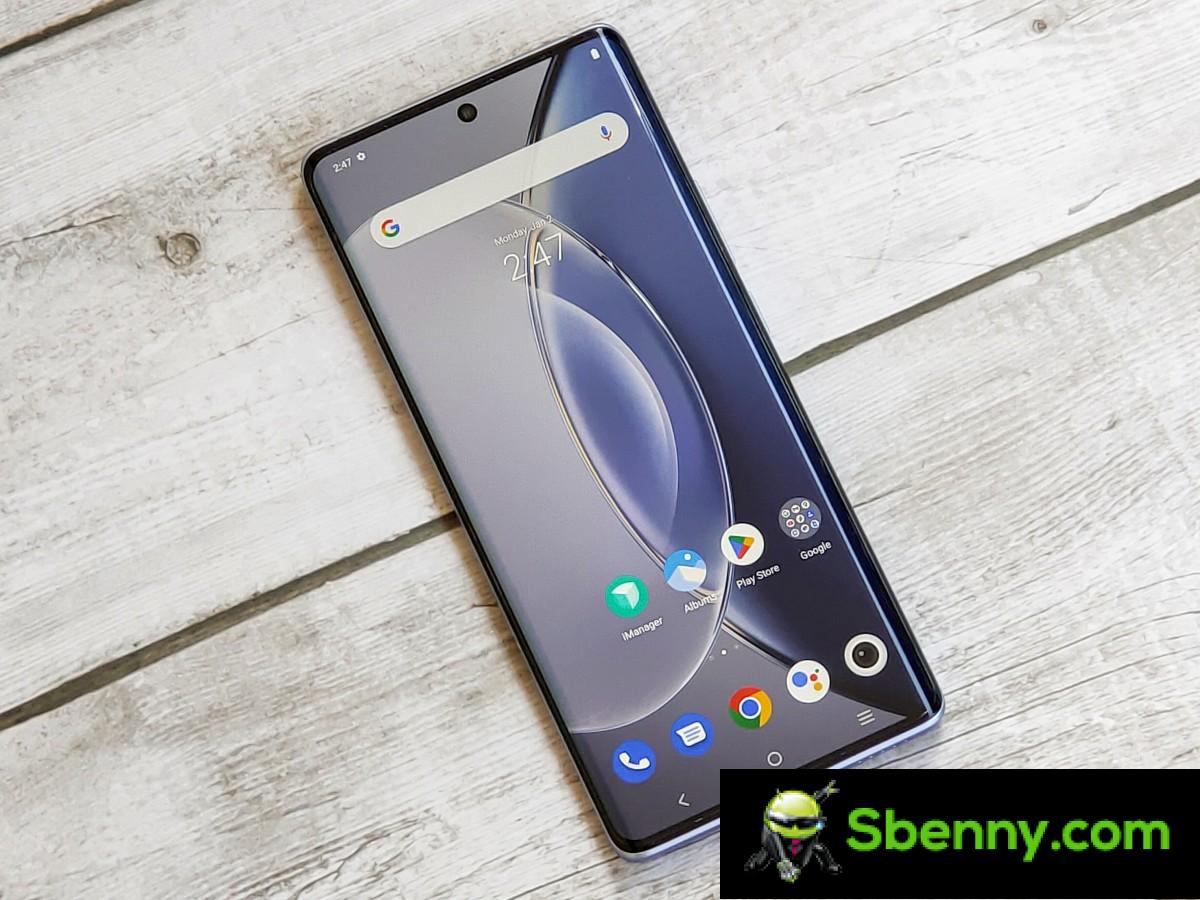
The vivo X90 has Smart Switch, 60Hz and 120Hz refresh rate options, and the display supports three refresh rates in total: 60Hz, 90Hz and 120Hz. When you select the 120Hz option, you get an additional setting” Apps running at a high refresh rate” which allows you to choose which apps/games can run at 120Hz. We turned it on for all apps and games installed on our unit.
With Smart Switch mode, the refresh rate is increased from 60Hz to 120Hz for most system menus and apps when you interact with the screen, except some apps, including YouTube, Google Chrome, Google Photos, GSMArena and Quora – which remain at 60Hz. For Facebook, Instagram and Twitter, the display refreshes to 120Hz when you interact with the screen and drops to 60Hz when you look at an image or play a video.
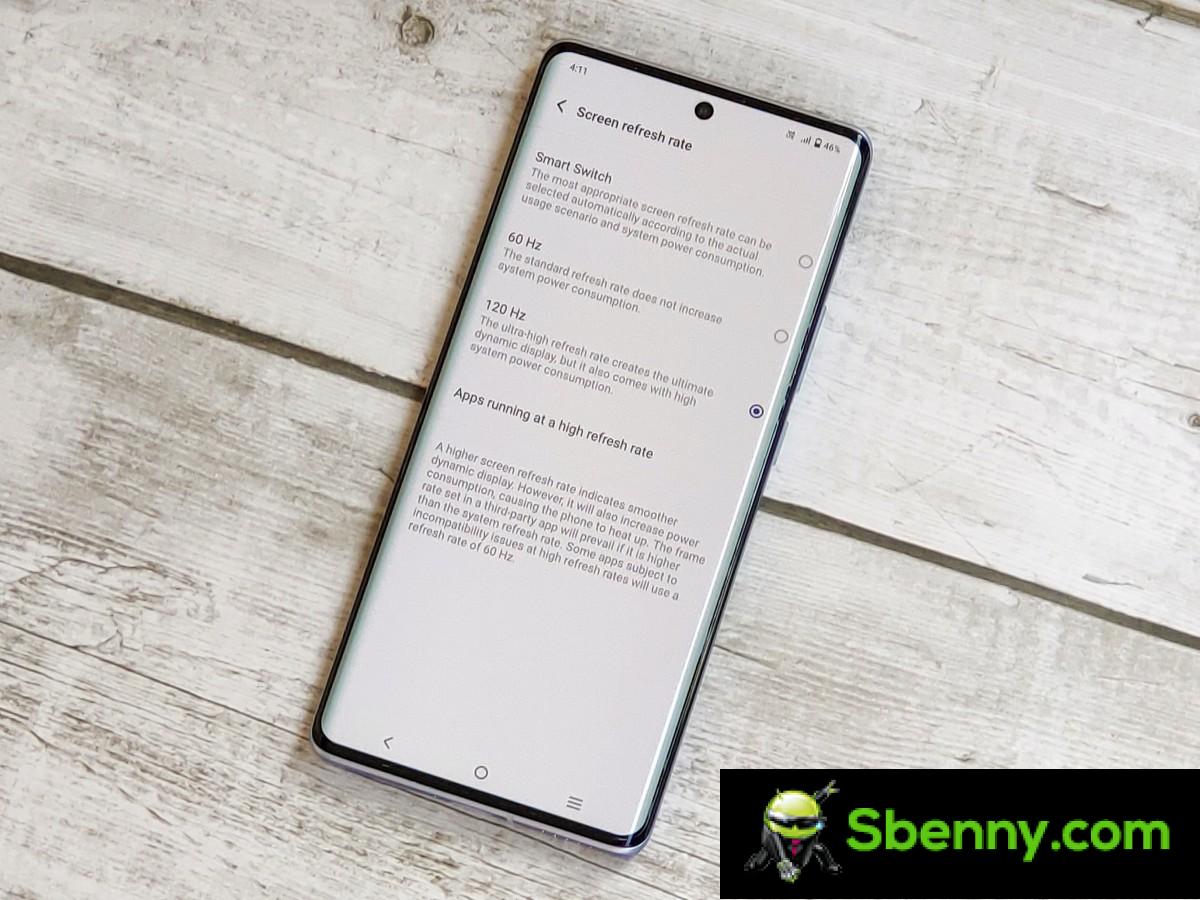
In 60Hz mode, the refresh rate should stay at 60Hz throughout, whether you’re interacting with the screen or just looking at it. 120Hz mode is basically Smart Switch mode, but with all apps hitting 120Hz when they interact with the screen instead of being limited to 60Hz.
We tried Call of Duty Mobile, Dead Trigger 2, Real Racing 3 and Sky Force Reloaded on the live X90. In Smart Switch mode, only Dead Trigger 2 reached 120 FPS by interacting with the screen and stayed at 60 FPS just by looking at it, while in 120Hz mode, both Dead Trigger 2 and Sky Force Reloaded reached 120 FPS by interacting with the display.
If you want a smooth experience, 120Hz mode is your best option, provided you’re willing to go through the hassle of enabling it individually for apps/games from the “Apps running at high refresh rate” setting.
Despite press materials claiming the 90Hz refresh rate option, at no time did we see it activate. On the bright side, we did not experience any incorrect screen tap issues with the vivo X90 due to the curved display.
Software and performance
The vivo X90 is helmed by the Dimensity 9200 SoC, the same chip that powers the more expensive vivo X90 Pro. It comes with up to 12GB of LPDDR5 RAM and 256GB of UFS 4.0 storage. Ours came with 12GB of RAM and 256GB of storage. Regardless of the memory configuration chosen, the smartphone runs Funtouch OS 13 based on Android 13, as the Origin OS is still limited to Chinese units.
Our unit is currently updated to the slightly outdated May 1, 2023 security patch level. vivo has promised three generations of Android updates and three years of “regular security updates.” How regularly vivo manages to roll out security patches is something only time can tell.
The vivo X90 comes pre-installed with third-party apps, but fortunately most of them can be uninstalled if you wish. It’s also worth mentioning that the vivo X90 comes with uninstallable Hot Apps and Hot Games, which the X90 Pro doesn’t have. It’s unclear whether this is a cost-cutting measure or because the X90 is cheaper than the premium X90 Pro.
The software experience you get with the vivo X90 is the same as you get with the X90 Pro, so we suggest you read our vivo X90 Pro review if you want to know more about Funtouch OS 13.
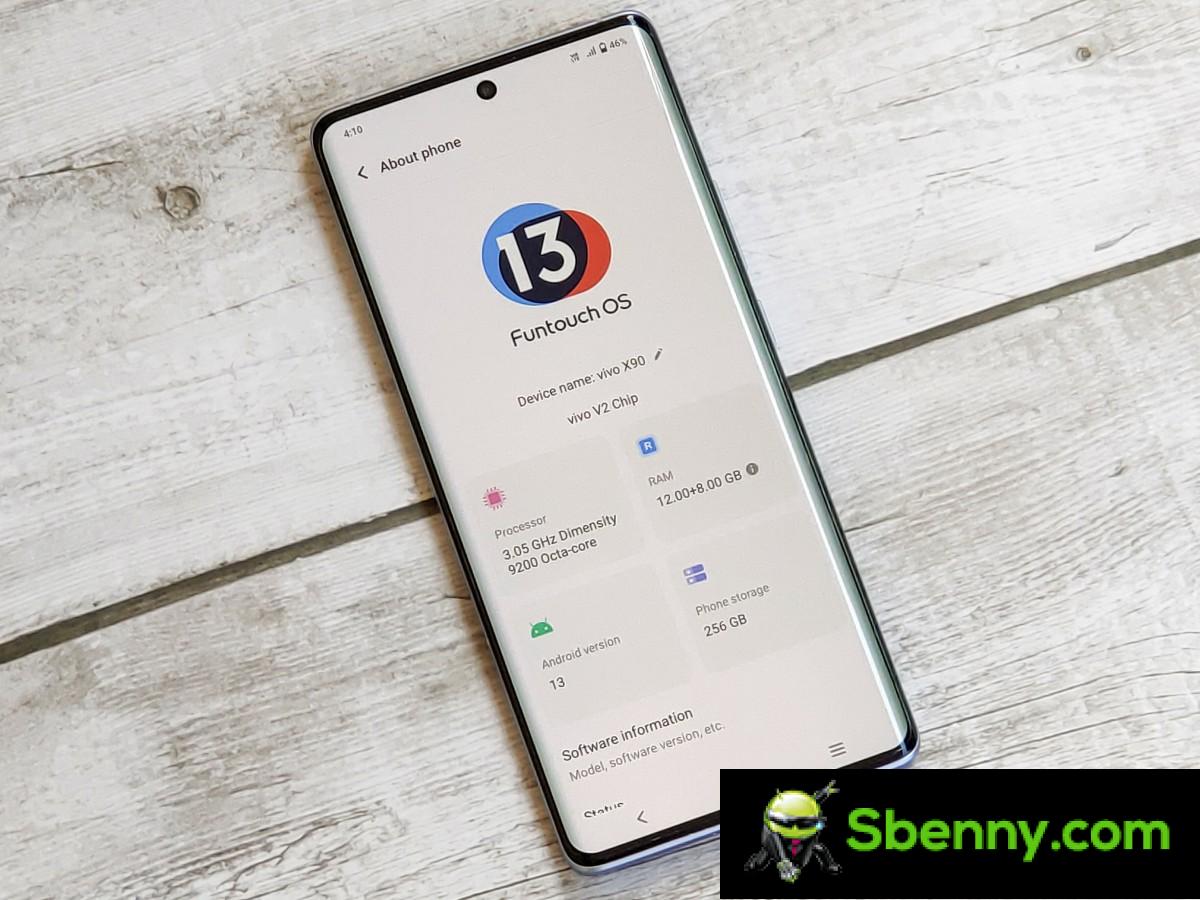
Previously, some vivo/iQOO flagships launched in India weren’t as snappy as other phones with the same chipsets, which, fortunately, is not the case with the X90 and X90 Pro. vivo has finally done enough to make more fluid user experience and it was time too. However, switching between apps using the navigation buttons continues to be a slow issue as there are no improvements on that front. Obviously gesture-based navigation is the way to go these days, but it can still be annoying for old schoolers.
A few other bugs need to be fixed as well. The Always-On Display is automatically deactivated if the phone’s battery is completely empty. This also happened with the Indian X90 Pro, but not with the previous vivo (and iQOO) flagships we used in India.
Also, vivo needs to improve the X90’s ability to stay hooked to 5G networks as it keeps switching to 4G/4G+ when held a certain way and held in certain areas of the room. It also switched from 5G to 4G while charging, which isn’t ideal. Some other 5G smartphones we’ve similarly used on the same network in the same room didn’t have these issues. Fortunately, the network switch issue was fixed with the May 2023 Android Security Update, but vivo did not fix the Always-on Display issue.
That said, while the vivo X90’s software experience wasn’t without its flaws, the overall performance of this Dimension 9200-powered smartphone was snappy and smooth. There were almost no stutters during day-to-day use, and the phone handled long gaming sessions well. However, the vivo X90 often got hotter than usual, even when used for web browsing, which is hardly a surprise, as in our experience, the Indian models of many vivo and iQOO smartphones have historically faced overheating issues. There were also cases where the X90 got quite hot when not in use and lying on a table. vivo needs to work out the proper optimizations to fix it.
Camera
The vivo X90, like the X90 Pro, is equipped with four cameras: one front and three rear. The X90’s front-facing camera uses a 32MP sensor that’s the same as the Pro model, but the triple camera setup on the back is different. It includes a 50MP primary, a 12MP ultrawide (108° FOV), and a 12MP telephoto. The fourth circle houses the laser focus sensor.
The 32 MP selfie camera has an f/2.45 aperture and can record videos in up to 1080p resolution at 60 FPS. It also supports five ZEISS styles for Portrait mode photos: Biotar, Sonnar, Planar, Distagon and Cinematic. vivo introduced a new ZEISS portrait style with the X90 series called Cine-flare, but it’s not available for the front cameras on the X90 and X90 Pro.
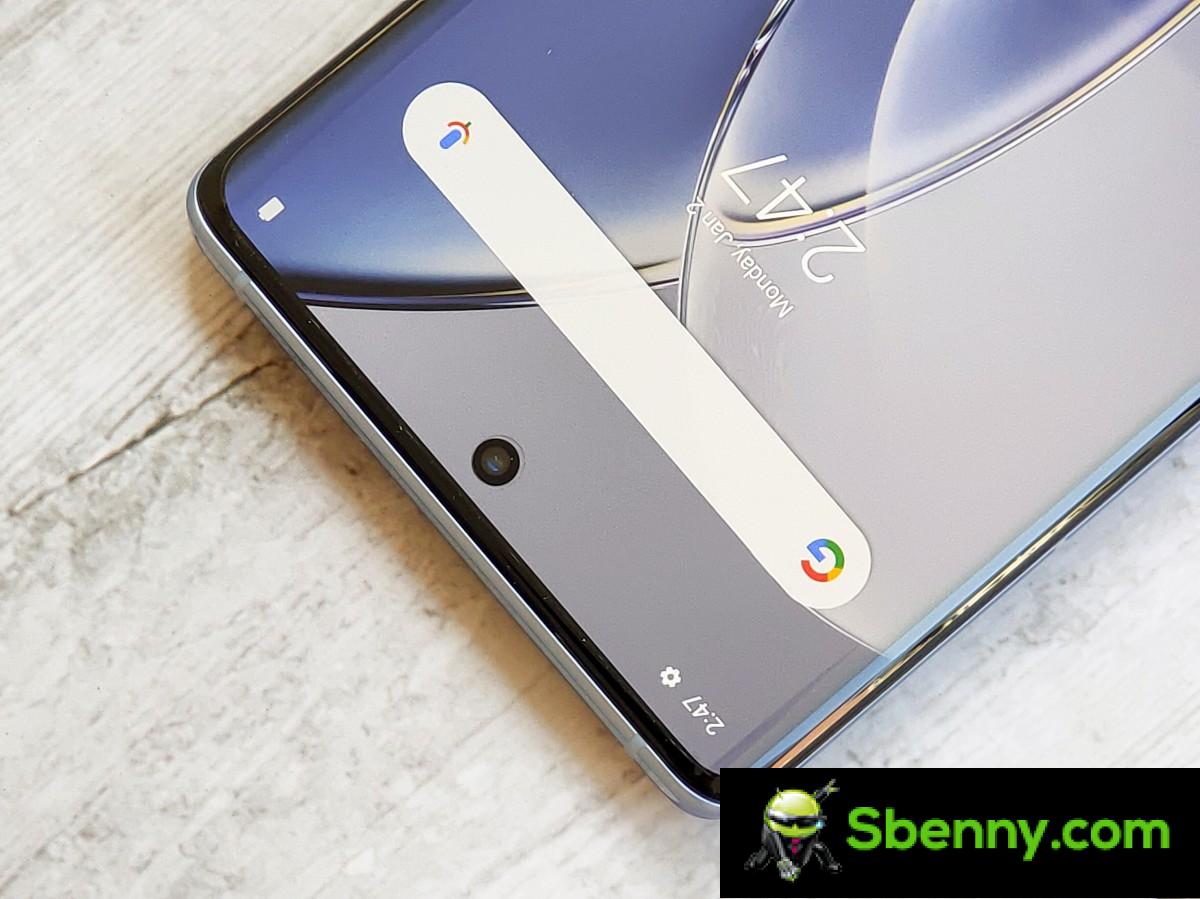
The 50 MP main camera on the back has an f/1.75 aperture and OIS. It uses the Sony IMX866vcs sensor capable of shooting videos up to 4K resolution at 60 FPS. It can also record HDR10+ video in 1080p at 30FPS and you also have the option to shoot video with the ZEISS cinematic filter.
The two 12MP cameras use a Sony IMX663 sensor, but one sits behind a 2x optical zoom telephoto lens, while another sits behind an ultrawide lens. It’s also worth mentioning that the 12MP telephoto camera, advertised as a “Professional Portrait Camera”, has an f/1.98 aperture, while the 12MP ultrawide camera has an f/2.0 aperture. The latter can also take macro shots with the Super Macro mode.
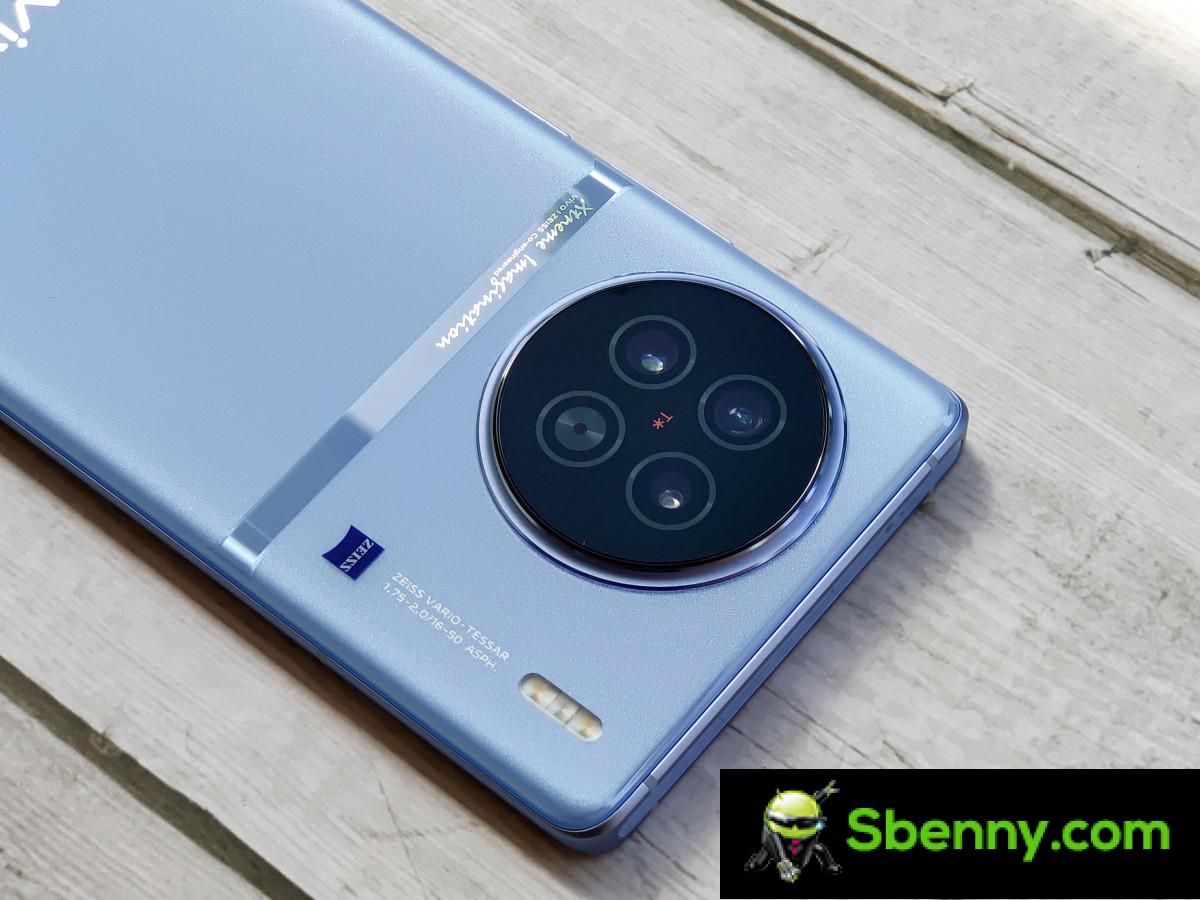
All three of the vivo X90’s cameras were quick to capture images in the default Photo mode, and we experienced no shutter lag. The main camera also did a great job taking photos of flowers and plants in windy conditions without blurring. We also like the Sport mode, which is meant to help users take blur-free photos in fast-paced situations. We took a few photos of fast moving vehicles from inside a fast moving vehicle and the results were better than expected.
Compared to the X90 Pro, and considering its lower price, the X90 took great photos day and night. However, despite the use of ZEISS T* Coating on all rear cameras, photos taken with the main and ultrawide cameras at night and in low-light conditions produced lens flare, which was the case with even the more expensive X90 Pro.
Photos taken with Portrait mode had good subject separation, but the algorithm often struggled with glasses and blurry parts regardless of the distance between the camera and the subject. We also noticed some discoloration of distant objects in some scenes in photos taken with the ultrawide camera.
The vivo X90 also has a Supermoon mode, which lets you take photos at 1x, 2x and 10x zoom levels. The photos of the Moon we took at 1x and 2x zooms looked fake and artificial compared to 10x zoom, so we preferred that. However, it’s best to use a tripod when taking photos with a 10x zoom in Supermoon mode.
You can check some photos we took live X90 below.
Day photos
Let’s take a look at the daytime photos first.




















Main camera
Here are some images taken with the ultrawide camera.









Ultra wide angle camera
Some pictures taken with Super Macro mode.



Super Macro with Ultrawide camera
A couple of photos taken with Sport mode.

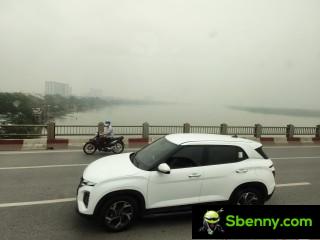
Sports mode
Night photos
Now let’s look at some night photos.






Main camera
Images taken with Supermoon mode.



Super Moon Mode: 1x • 2x • 10x
Drums
The vivo X90 packs a 4,810mAh dual-cell battery, which is 60mAh smaller than the battery in the X90 Pro. We couldn’t run our standard battery tests on the vivo X90 as the phone wasn’t tested at our HQ. general. However, anecdotally speaking, the vivo X90 got us through the day on a single charge averaging 4.5-5.5 hours of screen-on time under moderate to heavy usage with a 120Hz screen refresh rate. and 5G mobile data and Wi-Fi hotspot enabled. all time. Usage consisted of web browsing, streaming YouTube videos, using social media apps, and at least an hour of resource-intensive gaming.
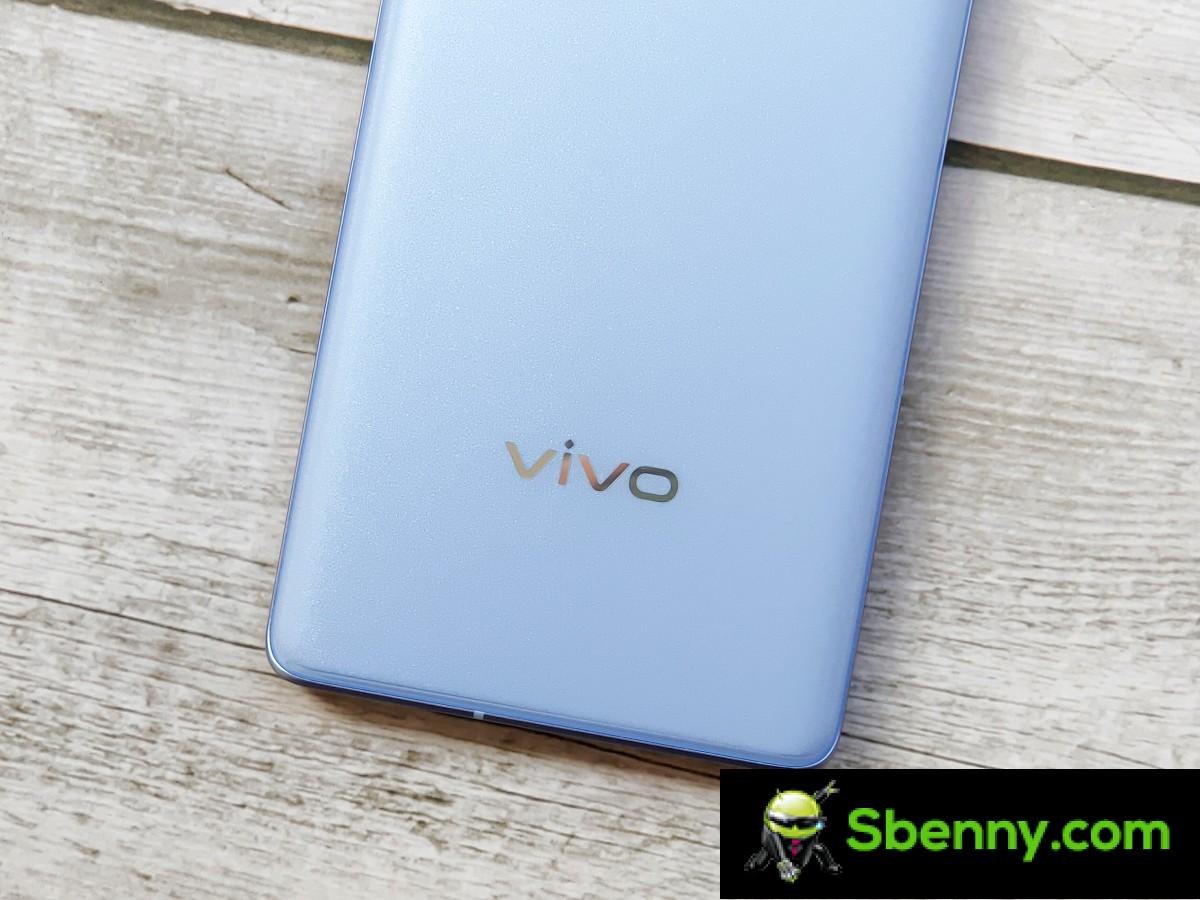
Once the battery is empty, you can charge it with the supplied 120W power adapter, advertised to fill it from 1% to 50% in 8 minutes. In our tests, the smartphone charged from 1% to 23% in 5 minutes, 42% in 10 minutes, 50% in 12 minutes, 59% in 15 minutes, 99% in 30 minutes and 100% in 32 minutes. We ran these charging tests during the hot summer season in India with the always-on display and 5G mobile data turned on, and your mileage will likely vary depending on usage and ambient temperature.
Conclusion
The vivo X90 is not a premium flagship like the vivo X90 Pro which features an impressive camera system featuring a main camera that uses the 50MP 1″ type sensor. It also does not sport a 50MP telephoto lens or support wireless charging like the Pro model Also, the vivo X90 doesn’t cost as much as the X90 Pro.
In India, the vivo X90 Pro is available in a single 12GB/256GB memory configuration priced at INR 84,999 ($1,040/€950), while the X90 with the same amount of RAM and storage it costs INR 63,999 ($780/€715). There’s also a model with 8GB of RAM and 128GB of built-in storage, priced at ₹59,999 ($730 / €670).
Despite not being a true flagship, the vivo X90 has a lot going for it. It has a nice slim design with an IP54 rating and the Breeze Blue model looks absolutely beautiful. Overall performance is snappy, even when it comes to gaming, with the AMOLED screen vivid and bright.
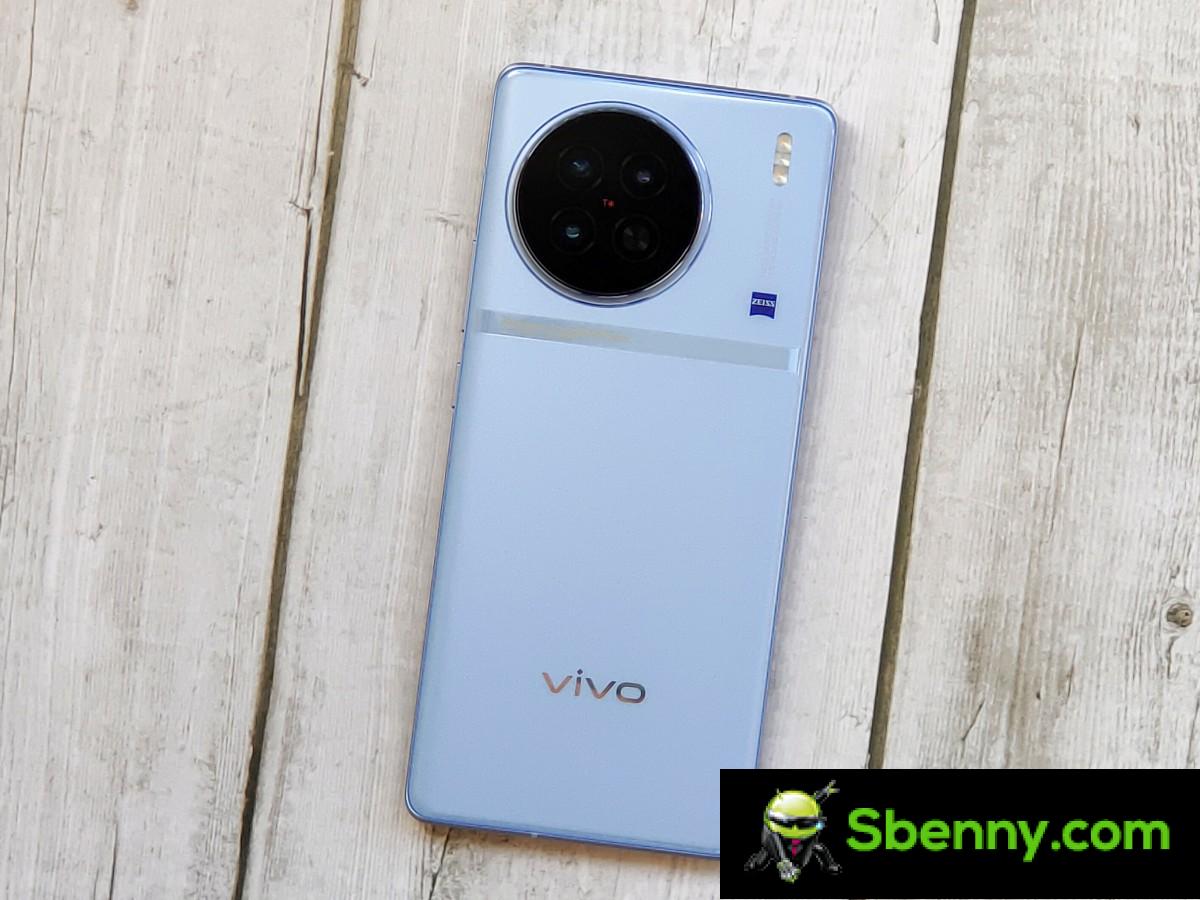
Battery life on the vivo X90 isn’t the best out there, but it got us through the day on a single charge. And the 120W wired charging support ensures that the smartphone is fully charged in about half an hour.
Talking about the cameras, the vivo X90 doesn’t offer the same results as its Pro counterpart. However, it took good pictures during the day and night. However, the phone gets hotter than usual and there have been strange software bugs, some of which have been fixed since alive.
To conclude, if the vivo X90 Pro – which is vivo’s flagship offering in the international market right now (Pro+ is exclusive to China) – doesn’t fit your budget, or if you don’t want to pay the premium for a 50MP 1 “, 8K recording, an excellent design with an IP68 rating and a slightly larger battery with 50W wireless charging, so you can’t go wrong with the vivo X90.


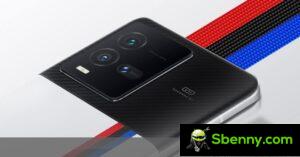


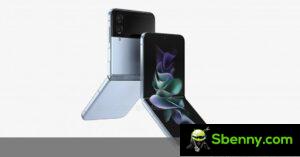
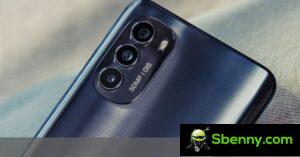
Start a new Thread